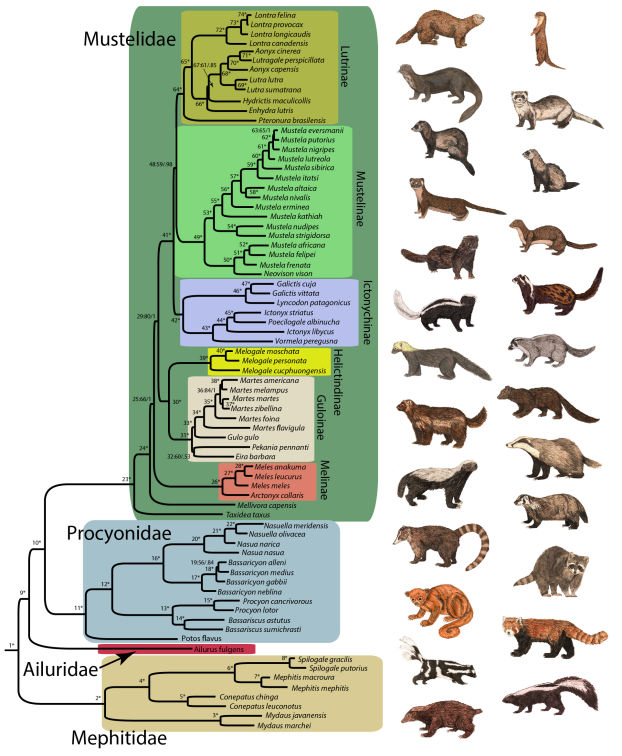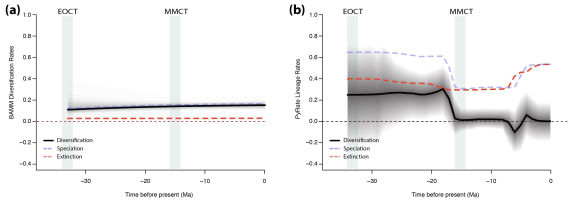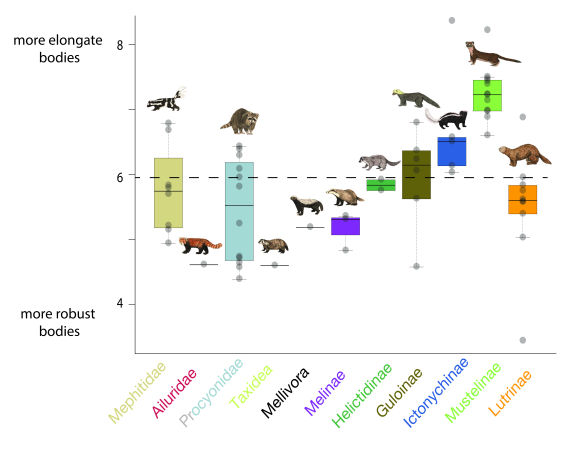With over 85 described species including badgers, otters, weasels, raccoons, skunks, the wolverine, and the red panda, Musteloidea is an incredibly diverse group of animals. Equally impressive is the great ecological disparity, allowing different species to exploit arboreal, fossorial, or aquatic lifestyles as well as a variety of diets ranging from bamboo to insects to rodents. The incredible ecological and phenotypic diversity in Musteloidea is often attributed to adaptive radiation coinciding with two major climate events, the Eocene–Oligocene transition (~33 million years ago) and the Mid-Miocene Climate Transition (~16-13 million years ago). In both instances, periods of abrupt cooling and drying resulted in a dramatic expansion of grasslands and woodlands, and, in turn, led to the diversification of rodent species, which are the predominate prey of many mustelids. Whether musteloids are an adaptive radiation has never been quantitatively assessed. In this study, tested the hypothesis that patterns of lineage diversification and phenotypic evolution in Musteloidea are consistent with adaptive radiation theory.


